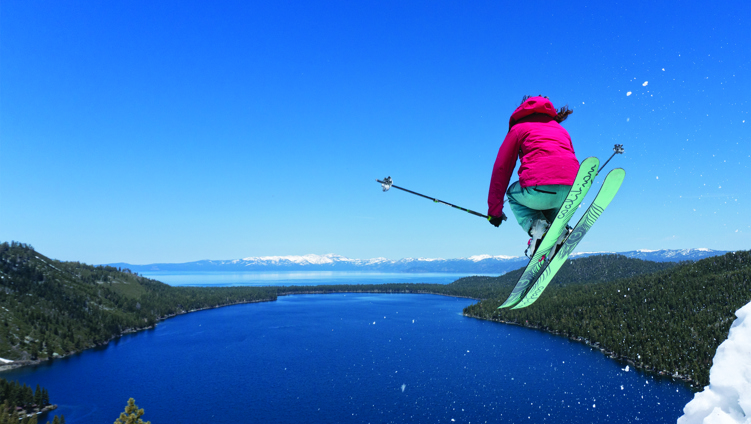Diane Cook's work explores the relationship between the civilised and the wild Her novel The New Wilderness follows a community of people living in society’s last remaining wilderness.

Diane Cook's work explores the relationship between the civilised and the wild Her novel The New Wilderness follows a community of people living in society’s last remaining wilderness.
Set in a speculative, pre-apocalyptic future, The New Wilderness follows a community of research participants voluntarily living a primitive, nomadic existence in the Wilderness State: society’s last remaining wilderness. Through community members Bea and her daughter Agnes - who would have died amidst the worsening pollution of “the City” - we follow the group as they struggle for survival and meaning.
Diane has long been fascinated by the relationship between natural and civilised spaces - a thread that also runs through her first book, the 2014 short-story collection Man v. Nature. Tempting as it is to highlight her upbringing on the borderline between suburban sprawl and wilder land, she isn’t entirely sure where this preoccupation came from. “It’s just one of the first things I start thinking about when I have free time to think,” she says.
More specifically, The Last Wilderness grew from an interest in environmental mitigation: the idea that “if you want to develop one place, you have to rewild another place to mitigate the impacts.” What would life look like, Diane started to imagine, if all other land was developed and there was only this large swathe of rewilded land left?
This is not a farfetched premise, especially writing from a US perspective. Wild places are precarious, Diane notes, and political volatility brings further destablisation and uncertainty. She references Trump’s hurried outgoing move to auction of drilling rights in the Arctic National Wildlife Refuge (ANWR), and his reversal of many of the national monuments designated by Obama - an oscillation Biden is likely set to continue.
The New Wilderness declines to try and answer such concerns. “I gravitate to fiction because I'm much more comfortable in a place of uncertainty than certainty,” says Diane. “So with what I'm trying to write or create I want there to be a sense of exploration and not question answering, but question making.”
This hints at the value of exploring the relationship between adventure and social and environmental issues through art, as well as adventure itself and factual learning. Of course we don’t need fiction writing, or any other specific art form, to pose questions. But the sustained narrative and emotional investment offered by a novel like The New Wilderness surely hold more space to hold questions and uncertainty than many other discussion forums - especially social-media debates characterised by rapid, hard judgement.
For example, one question The New Wilderness explores is what it feels like to be without the kind of home most of us know and need. How does being forced to adapt to a new form of home change us and how we relate? This is, of course, a defining question in many people’s lives - not least Idigenous communities across North America.
There are also parallels between the persecution of the community in The New Wilderness and the treatment of refugees in Europe today. As Hannah Parry’s piece in this Edition shows, both communities are strongly incentivised to flee danger and to undertake something that in other contexts might be celebrated as expeditionary. Yet both are received with varying levels of disdain. Fictions may not be the first, best or only space for these issues, but it can offer a resonant, even unexpected way in.
Though pre-apocalyptic, The New Wilderness also rejects a simple polluted-versus-pure comparison between the civilised and natural worlds. The wilderness is not portrayed only as a beautiful place of wellness, but as a harsh environment which, under certain conditions, can encourage behaviour by turns callous and naive. A driving idea behind Diane’s work is “the fact that people are animals, but we keep ourselves separated from that fact on a daily basis.” Under what circumstances does the veil slip? And does denying there is even a veil increase the damage when it does?
The New Wilderness also poses questions about adventure. “I definitely see it as an adventure novel, among other things,” says Diane. “I was trying to give these characters an experience and an adventure more than I was trying to say something about climate change or explore environmental degradation. All of that stuff lives in this bubble on the outside of the human drama.”
Though some characters feel compelled to enter the Wilderness State, they also enter with various adventurous mindsets. The community includes a man living a boyhood dream, an alpha akin to today’s “peak bagger” and a girl, Agnes, who remembers little else but the wilderness.
“I think [Agnes] has the greatest adventure,” says Diane, “because her adventure is pure. It's not the adventure of experiencing something different from herself; it's the adventure of getting to become the thing that she is living in.” But like the perspectives of the other characters, even this purity brings problems and blind spots.
The New Wilderness, and fiction generally, leverages the power of imagination to explore our changing relationship with the natural world in ways that adventure films or reports are less able to. What will life feel like as natural space recedes? How will our relationships change? What can we do to help avert such a future?
Diane would never profess to be answering such questions. But, like other artists concerned with our collective future, she is addressing them in creative and thought-provoking ways. We would love to see the adventure community engage more with creative work relevant to but coming from outside of the traditional adventure community, and plan to do our bit through 2021 to highlight the best of this work. As ever, we welcome your help in letting us know where to look.
The New Wilderness is out now. You can order a copy here.

